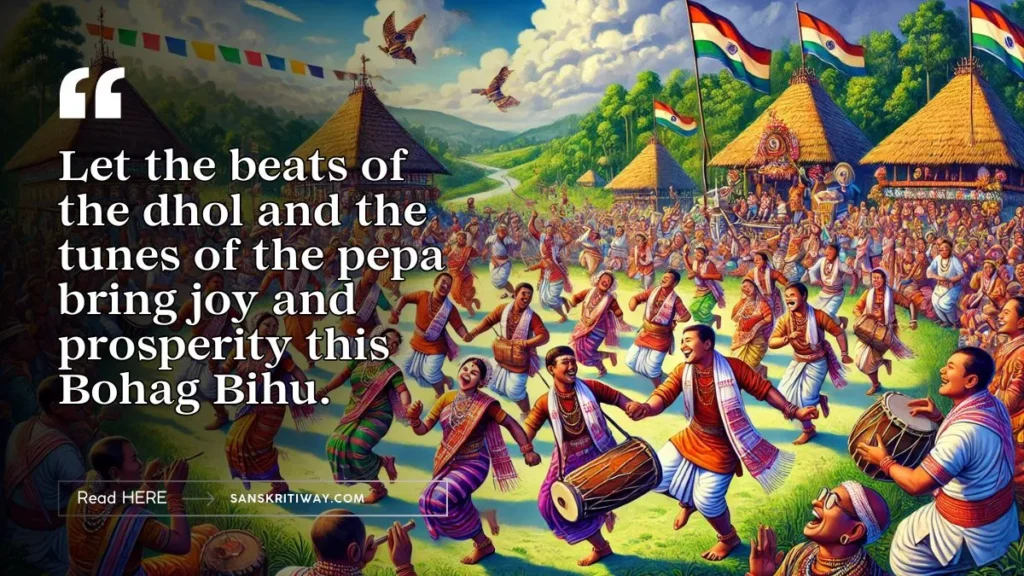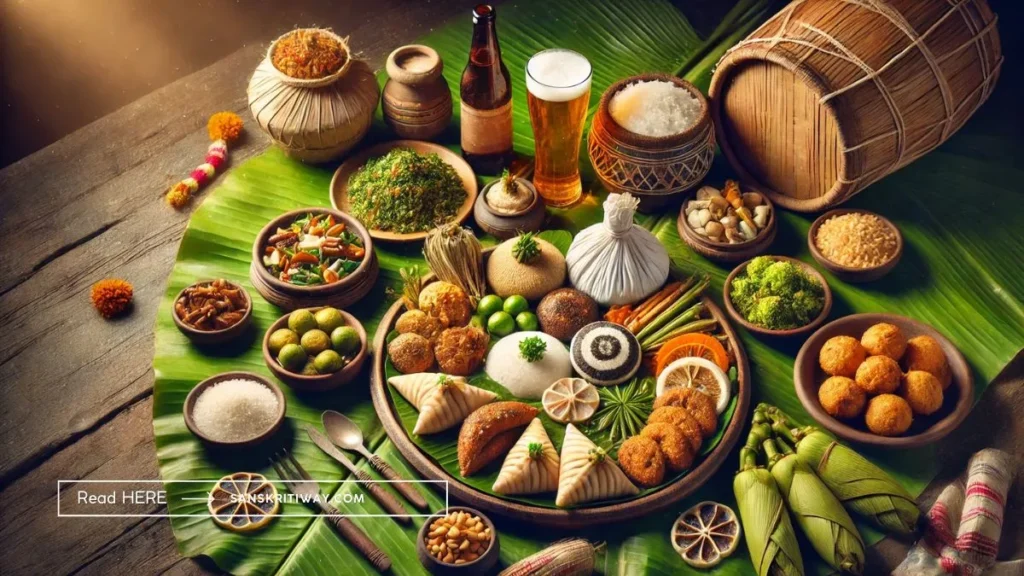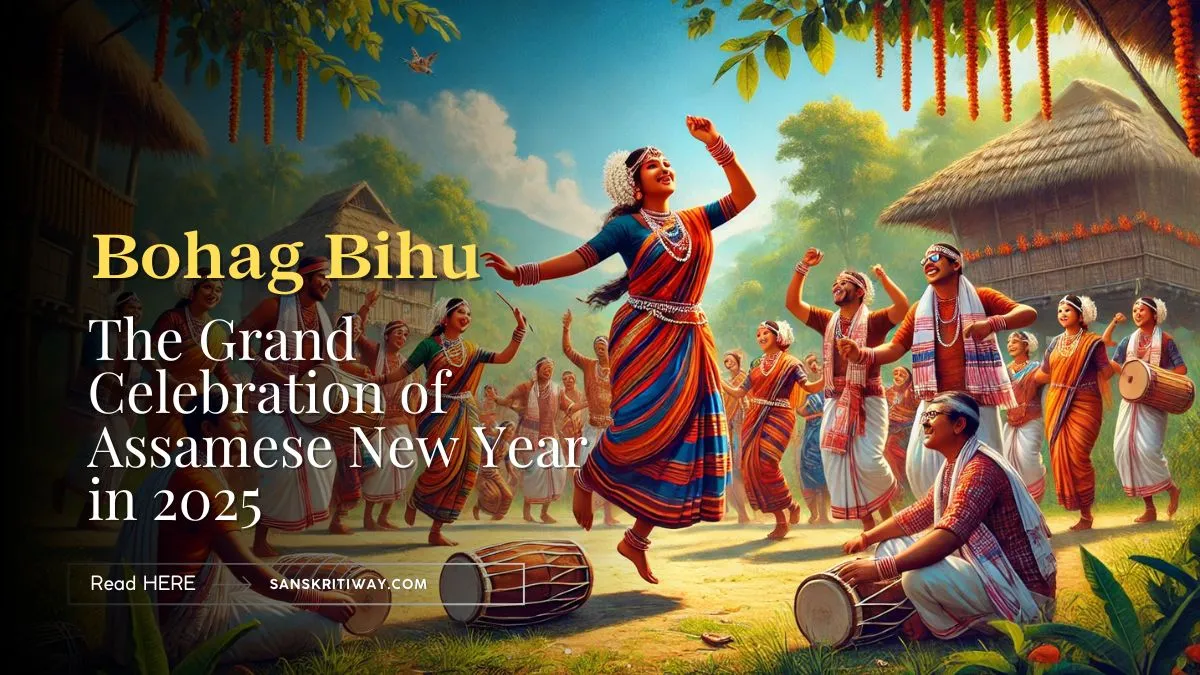Bohag Bihu, or Rongali Bihu, is the most colorful festival, combining the culture of Assam with the celebration of spring in association with the new year. Celebrations of this festival begin with agricultural traditions and culminate in a magnificent celebration of life. In 2025, Bohag Bihu will be celebrated from April 14 to April 20 and will aid in fostering community cohesiveness and an appreciation for prosperity.
Bihu Festival 2025: Understanding the Three Bihu Festivals
Rongali, Bihu and Bhogali can be combined and referred to as Bihu sometimes as the three distinct stages that fill up the year in these states. Besides acting as a channel for expression, each instance is crucial for farming traditions in Assam’s culturally rich agricultural tapestry.
The first phase is Bohag Bihu (Rongali Bihu). The Assamese New Year begins with its celebration in April. It brings along new clothes, along with the joy brought in by spring and celebrating through traditional songs, dances, and seasonal feasts.
January commemorates Bhogali Bihu, also known as Magh Bihu. It is a harvest festival filled with delicious food, community bonfires, and celebration. The people prepare rice cakes known as pitha, sweet balls called laru, and gather for feasts, which are followed by the burning of meji, bamboo structures, the next day.
October marks the celebration of Kongali Bihu, also known as Kati Bihu. This festival is far more serious in nature and puts an emphasis on prayer for bountiful harvests. Farmers try to get rid of evil spirits by lighting earthen lamps called sakis and placing them next to tulsi plants and in rice fields. During this time, there is no excessive feasting, and it showcases the time of scarcity before the harvest.

Bohag Bihu 2025: Date and Time
In 2025, we will observe Bohag Bihu from the 14th to the 20th of April. The major day is April 15, which is Manuh Bihu, or New Year’s Day. During this time, people get blessings, wear new clothes and start off the year positively and with gratitude.
The Story Behind Bohag Bihu
Bihu retains its connection to the agrarian life of Assam. ‘Bishu,’ which translates to ‘praying whilst harvests are being collected, is where the Sanskrit word is derived from. The festival signifies the resumption of farmers’ efforts and their fervent prayers for prosperous harvests in the coming year. It also happens to be a momentous period for different communities to come together for celebrations which involve dancing, music, and feasting.
Historical Significance
Bohag Bihu’s inference can be traced through history as far back as when it was celebrated by native tribes as a festival to pay homage to nature and her gods. It is said that Bohag Bihu has links with the Ahom kingdom that predominated over Assam for more than six centuries. This is a tribute to the people of Assam, as the Ahoms later incorporated other ethnic practices into the festival. This blend gave birth to specific forms of Bihu. Bihu is also referred to in ancient Assamese literature and songs, which symbolize the elements of culture and society’s integration and intersectionality intertwined with their agrarian economies.
How Bohag Bihu is Celebrated
Everyone knows that, known as Xaat Bihu, the seven objectives of Bohag Bihu are celebrated in leaves other practices and traditions embossed in Assamese culture.
- Raati Bihu: this begins on the first evening of the month of Chot. Women light torches and sing traditional songs under godly trees in social groups.
- Chot Bihu: A public performance of Bihu songs and dances takes place on the second day of the month.
- Goru Bihu: The opening day of Rongali Bihu celebrates cow worship. Cattle are washed, ornamented and fed in thanksgiving.
- Manuh Bihu: The second day is New Year’s Day, when people clean their dwelling homes, put on new garments, and receive favorable attention from their elders.
- Kutum Bihu: Day dedicated to family gatherings where people visit relatives and share food with them.
- Mela Bihu: Sports events and cultural fairs that encourage participation within the community in enjoyable activities.
- Chera Bihu: Reflective intentions for the new year usher in the festival’s final day.

Bihu Dance: The Heart of the Celebration
Bohag Bihu is world-renowned for its colorful Bihu dance, a lively folk dance of the Assamese people. The Bihu song, accompanied by claps, plays an important role in the Bihu dance. Both men and women take part in the Bihu dance, clad in ethnic Assamese garments that include Mekhela Chador for women and Dhoti-Gamosa for men. Bihu dance performances are further enhanced by the rhythms produced by the dholas (drums), pepars (buffalo horn pipes), taals (cymbals), and toka (bamboo clappers). Bihu is the time for fun, love, joy and peace and is shown through the Bihu dance. The dance can be performed in all kinds of settings, including during cultural programs, festivities, and community gatherings.
Bihu and Its Culinary Delights
The celebration of Bohag Bihu would be incomplete without the inclusion of its special treats. Some of the unique foods prepared for the occasioare pithaha (sweet rice cakes with a filling of jaggery and coconut), laru (sweet made with coconut or sesame seeds), Xaak aru bhaji (a variety of assorted green vegetables), and homemade rice beer (only made by certain families). Assamese ‘Bhoj’ is a communal feast prepared to celebrate the festival where family and friends gather together to eat and enjoy the delicious cuisine.
Bohag Bihu represents Assamese culture, unity, and prosperity. If you are in Assam or plan to visit, Bihu celebrations will be amazing.
Don’t forget to join in the dances, relish the delicious food, and soak in the lively spirit of Bohag Bihu 2025!
Visit Sanskriti Way
